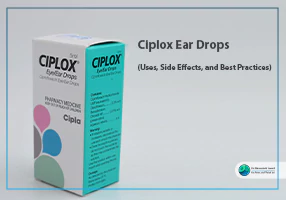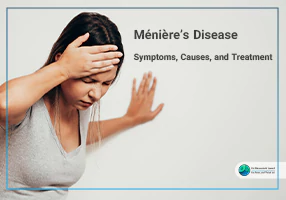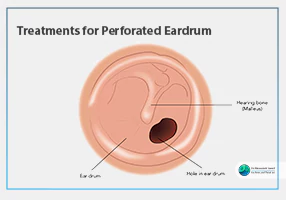Noise-Induced Hearing Loss: How to Prevent and Manage It

In our noisy world, from bustling construction sites to blaring headphones, noise-induced hearing loss (NIHL) is a growing concern affecting millions. This preventable condition can sneak up on anyone exposed to loud sounds over time or even from a single intense noise. Whether you’re a factory worker, a concertgoer, or someone who loves cranking up the volume, understanding NIHL is key to protecting your hearing. This article dives into the causes, signs, diagnosis, treatment options, and practical steps to prevent noise-induced hearing loss, empowering you to safeguard your ears.
What Is Noise-Induced Hearing Loss?
Noise-induced hearing loss happens when loud or prolonged sounds damage the delicate hair cells in the inner ear, which are responsible for sending sound signals to the brain. Unlike some hearing issues, NIHL is typically sensorineural, meaning the damage is permanent and affects the inner ear’s ability to process sound. The risk depends on the sound’s intensity (measured in decibels), exposure duration, and individual susceptibility. For instance, sounds above 85 decibels—like heavy machinery or live music—can harm hearing after just a few hours.
Common Causes of NIHL
Loud noises are everywhere, and certain environments or habits increase the risk of hearing damage. Key causes include:
- Noisy Workplaces: Jobs in construction, manufacturing, or mining often involve constant exposure to loud equipment without proper ear protection.
- Loud Music and Entertainment: Listening to music at high volumes through earbuds or attending concerts can gradually erode hearing.
- Recreational Noise: Activities like shooting firearms, riding motorcycles, or using power tools (e.g., chainsaws) produce harmful sound levels.
- Sudden Loud Noises: A single exposure to an extremely loud sound, such as an explosion or gunshot, can cause immediate hearing loss.
![]() Signs to Watch For
Signs to Watch For
NIHL can develop slowly or strike suddenly, depending on the exposure. Common symptoms include:
- Trouble hearing soft sounds or conversations, especially in noisy settings
- A ringing, buzzing, or hissing in the ears (tinnitus)
- Difficulty picking up high-pitched sounds, like birds chirping
- Needing to turn up the TV or radio volume more than usual
- In severe cases, struggling to understand speech clearly
Diagnosing Noise-Induced Hearing Loss
If you suspect hearing problems, an ear, nose, and throat (ENT) specialist or audiologist can help. Diagnostic steps include:
- Hearing Test (Audiometry): This measures how well you hear different frequencies and determines the extent of hearing loss.
- Noise Exposure History: The doctor will ask about your work environment, music habits, or exposure to loud recreational activities.
- Additional Tests: Tests like otoacoustic emissions (OAE) may be used to check the health of inner ear hair cells.
Treatment and Management Options
Sadly, the damage from NIHL is usually permanent, as inner ear hair cells don’t regenerate. However, several strategies can improve hearing and quality of life:
- Hearing Aids: These devices amplify sounds, making it easier to hear conversations and other noises.
- Cochlear Implants: For profound hearing loss where hearing aids aren’t enough, implants may restore some hearing function.
- Tinnitus Management: If tinnitus accompanies NIHL, sound therapy or counseling can help reduce its impact.
- Hearing Rehabilitation: Training in communication strategies and assistive devices can support daily interactions.
Prevention: Protect Your Ears
The good news is that NIHL is almost entirely preventable with the right precautions. Here’s how to keep your hearing safe:
- Wear Ear Protection: Use earplugs or earmuffs in loud environments, like concerts or construction sites.
- Turn Down the Volume: Follow the 60/60 rule for headphones: no more than 60% volume for 60 minutes at a time.
- Give Your Ears a Break: After loud exposure, let your ears rest to recover from temporary stress.
- Workplace Safety: Employers should provide ear protection and educate workers about noise risks.
- Regular Hearing Checkups: Routine tests, especially for high-risk individuals, can catch early signs of damage.
Final Thoughts
Noise-induced hearing loss doesn’t have to be part of modern life. By recognizing the risks of loud environments and taking simple steps, you can protect your ears from irreversible damage. Whether it’s wearing earplugs at a concert, lowering your headphone volume, or getting regular hearing tests, small changes make a big difference. If you’re noticing signs like muffled conversations or ringing in your ears, don’t wait—see a hearing specialist to take control of your ear health and keep enjoying the sounds of life.
Related Articles
Online Consultation, Directly with Dr. Saeedi
Ask your question via WhatsApp, and if you wish, Send your photo for a more accurate assessment.
Free Consultation on WhatsApp

 Signs to Watch For
Signs to Watch For



